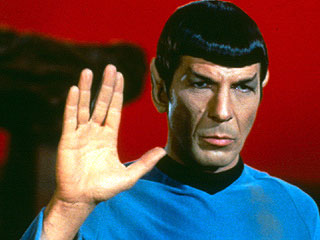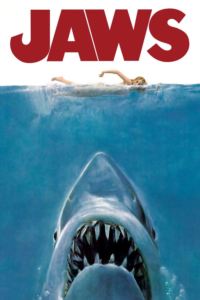 For three television seasons, animated and guest appearances and in many feature films, actor Leonard Nimoy would often address others with the phrase “Live long and prosper.” It was a philosophy Mr. Nimoy himself followed until he passed away today at the age of 83.
For three television seasons, animated and guest appearances and in many feature films, actor Leonard Nimoy would often address others with the phrase “Live long and prosper.” It was a philosophy Mr. Nimoy himself followed until he passed away today at the age of 83.
Best known for his portrayal of the emotionless Vulcan, Mr. Spock, on “Star Trek,” Nimoy would eventually escape that persona (he famously wrote his autobiography, entitled “I Am Not Spock”) to become not only a versatile actor but an accomplished photographer and film director.
Born in Boston on March 26, 1931, Nimoy began his acting career as a young boy, performing in local productions. He headed west after high school and, after serving in the United States Army, began appearing in popular television shows of the era, among them “Luke and the Tenderfoot,” “Broken Arrow” and “Mackenzies Raiders.” His unusual features often found him cast as a Native American. He worked steadily through the early 1960s and then, in 1966, he took the role that he would forever be identified with. Described by creator Gene Roddenberry, “Star Trek” was supposed to be like “Wagon Train” to the stars. Nimoy was cast as First Officer Spock, a member of the crew of the U.S.S. Enterprise. Nimoy was one of the few actors who remained with the show from the pilot until the final episode. Spock struck a nerve with the counter-culture of the times and quickly became the series’ most popular character. He was nominated for an Emmy as Outstanding Supporting Actor all three seasons “Star Trek” ran, losing to Eli Wallach, Milburn Stone (Doc on “Gunsmoke”) and Werner Klemperer (Colonel Klink on “Hogan’s Heroes”). HE LOST TO COLONEL KLINK??? Back then, the Emmy’s didn’t divide the supporting categories into drama and comedy. They also only had three nominees in that category, not the customary five. Wow. COLONEL FRICKING KLINK!
When the series ended Nimoy headed to another long running show, playing disguise and magic master Paris in “Mission: Impossible.” He also reprised the role of Spock on the Saturday morning “Star Trek – the Animated Series.” He continued acting through the 70s, appearing in the popular remake of “Invasion of the Body Snatchers” and also began working behind the camera, helming an episode of Rod Serling’s “Night Gallery.” In 1979 he once again returned to Spock in “Star Trek: The Motion Picture.” In 1981 he adapted and directed the television version of his one man play, “Vincent,” based on the life of Theo Van Gogh, brother of the famed artist, Vincent. The next year he returned in “Star Trek II: the Wrath of Khan,” coming back only after being assured that the character of Spock would be killed off. the success of the film, both commercially and critically, brought the offer to return. Nimoy agreed to come back if he could direct the feature film. In 1984, “Star Trek III – The Search for Spock” was released. The film featured the crew of the Enterprise trying to recover the body of Spock. Nimoy appears at the end of the film. He again directed “Star Trek IV – The Voyage Home,” probably the most fun of the “Original Series” films, which came out in 1986. The next year he went behind the camera for the very popular comedy “Three Men and a Baby.”
Nimoy also pursued a career in photography, with many of his photos being exhibited in museums across the country. In 1996 he published his 2nd Autobiography, “I AM SPOCK,” finally coming to terms with the character that had made him famous. He leaves behind his 2nd wife, Susan, and his children, Adam and Julie.

